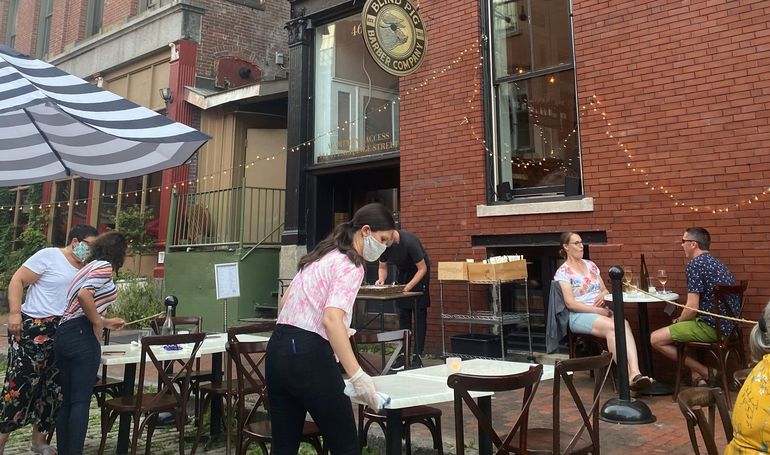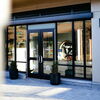Processing Your Payment
Please do not leave this page until complete. This can take a few moments.
- News
-
Editions
View Digital Editions
Biweekly Issues
- December 1, 2025
- Nov. 17, 2025
- November 03, 2025
- October 20, 2025
- October 6, 2025
- September 22, 2025
- + More
Special Editions
- Lists
- Viewpoints
-
Our Events
Event Info
Award Honorees
- Calendar
- Biz Marketplace
Most restaurant fund applicants are women, vets or economically disadvantaged
 Photo / Renee Cordes
More than a quarter-million restaurant owners across the U.S. have applied for Restaurant Relief Fund money since the program opened May 3, with a majority of them women, veterans and economically and socially disadvantaged individuals.
Photo / Renee Cordes
More than a quarter-million restaurant owners across the U.S. have applied for Restaurant Relief Fund money since the program opened May 3, with a majority of them women, veterans and economically and socially disadvantaged individuals.
More than 147,000 female, veteran and socially and economically disadvantaged business owners have applied for $29 billion in Restaurant Relief Fund money, accounting for more than half of the applications received since the program opened 10 days ago, according to the Small Business Administration.
The $28.6 billion Restaurant Revitalization Fund, part of the American Rescue Plan, opened for application May 3, and so far $2.7 billion has been distributed to 21,000 restaurants, bars and other food-related businesses, Isabella Casillas Guzman, head of the U.S. Small Business Administration, announced Thursday. The program is prioritizing applications from businesses owned by women, veterans and economically and socially disadvantaged individuals in its first 21 days.
Overall, the RRF has received more than 266,000 applications asking for more than $65 billion, the SBA said. The organization didn't break down the numbers by state.
"The numbers show that we’ve been particularly successful at reaching the smallest restaurants and underserved communities that have struggled to access relief," Guzman said. "These businesses are the pillars of our nation’s neighborhoods and communities. We are making progress, but we have much more work to do as we continue reaching our underserved entrepreneurs.”
The SBA said applications have been received from 76,183 female business owners, 6,093 veteran business owners and 42,284 economically and socially disadvantaged business owners.
"Restaurants, bars, and other small businesses offering on-site food and beverages are the core of our neighborhoods and propel economic activity on our Main Streets," Guzman said. "As among the first businesses to close and likely the last to reopen, restaurants and bars have suffered severely during the pandemic."
A focus on small businesses
Congress and the SBA also made sure money was set aside for small restaurants after criticism that funding during the pandemic has been gobbled up by bigger businesses, for a total of $9.5 billion.
In addition to $5 billion established by Congress for applicants with gross receipts not more than $500,000, the SBA created two additional funding allocations to ensure the smallest businesses, including food trucks and carts, would get aid. They are $500 million for applicants with 2019 gross receipts less than $50,000 and $4 billion for applicants with 2019 gross receipts between $500,000 and $1,500,000.
In the small-business categories, the SBA has received:
- 13,114 applications from businesses with less than $50,000 in pre-pandemic revenue, requesting $330 million;
- 100,410 applications from businesses with less than $500,000 in annual pre-pandemic revenue, requesting $8.14 billion;
- 61,535 applicants from businesses with $500,000-$1,500,000 in annual pre-pandemic revenue requesting $15.1 billion.
Because SBA still has potential funding available for eligible establishments with 2019 annual revenue of not more than $50,000, it will keep the application portal open, the SBA said. Eligible establishments that meet this revenue standard are encouraged to apply through SBA-recognized point-of-sale vendors or directly via the SBA online application portal.
Mainebiz web partners

The Giving Guide
The Giving Guide helps nonprofits have the opportunity to showcase and differentiate their organizations so that businesses better understand how they can contribute to a nonprofit’s mission and work.
Learn More
Work for ME
Work for ME is a workforce development tool to help Maine’s employers target Maine’s emerging workforce. Work for ME highlights each industry, its impact on Maine’s economy, the jobs available to entry-level workers, the training and education needed to get a career started.
Learn More
Groundbreaking Maine
Whether you’re a developer, financer, architect, or industry enthusiast, Groundbreaking Maine is crafted to be your go-to source for valuable insights in Maine’s real estate and construction community.
Learn more-
The Giving Guide
The Giving Guide helps nonprofits have the opportunity to showcase and differentiate their organizations so that businesses better understand how they can contribute to a nonprofit’s mission and work.
-
Work for ME
Work for ME is a workforce development tool to help Maine’s employers target Maine’s emerging workforce. Work for ME highlights each industry, its impact on Maine’s economy, the jobs available to entry-level workers, the training and education needed to get a career started.
-
Groundbreaking Maine
Whether you’re a developer, financer, architect, or industry enthusiast, Groundbreaking Maine is crafted to be your go-to source for valuable insights in Maine’s real estate and construction community.
ABOUT
NEW ENGLAND BUSINESS MEDIA SITES
No articles left
Get access now
In order to use this feature, we need some information from you. You can also login or register for a free account.
By clicking submit you are agreeing to our cookie usage and Privacy Policy
Already have an account? Login
Already have an account? Login
Want to create an account? Register
Get access now
In order to use this feature, we need some information from you. You can also login or register for a free account.
By clicking submit you are agreeing to our cookie usage and Privacy Policy
Already have an account? Login
Already have an account? Login
Want to create an account? Register







0 Comments